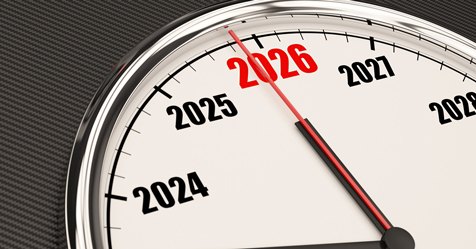In the cleaning industry, sustainability is one of the most used—and misused—terms in marketing. From eco-friendly product labels to social media hashtags, sustainability claims are everywhere.
People use hashtags (#) to do “more” when it comes to activities like sustainability efforts. It’s a sign of support. They post information, put keywords in hashtags, name a day for it, etc. But clients, regulators, and employees are no longer satisfied with promises. They want proof.
The difference between winning and losing business often comes down to whether you can demonstrate measurable results. This shift is pushing cleaning companies to treat sustainability not as a slogan, but as a documented, data-driven business practice.
Why proof matters
Statements like “we care about the planet” without evidence risk being dismissed as greenwashing or sustainability-washing. Some clients and regulators now require documented metrics before awarding contracts. Facility managers are under pressure to meet their own environmental goals, and they need service providers and product distributors who can deliver verifiable results.
Tracking and reporting measurable outcomes—such as reduced chemical use, lower water consumption, waste diversion rates, and energy and fuel savings—strengthens credibility, meets customer demands, and positions companies as trusted partners.
Start with measurable, high-impact changes
Sustainability practices are only valuable if they can be tracked. Examples include:
- Smarter procurement: Track purchases with recycled content, or third-party green product certifications. Purchasing locally from suppliers that value sustainability is a smart move.
- Reduce energy consumption: Purchase energy efficient equipment, clean with cold water, and turn off lights and equipment when not in use.
- Tools and equipment: Use those that are durable and repairable.
- Cut water waste: Adopt water-saving auto scrubbers and carpet extraction equipment, among other types of equipment. Measure water used per job and compare year over year.
- Improve waste diversion: Document the pounds of waste sent to the landfill versus being recycled or composted and provide monthly diversion percentages to clients.
These initiatives often reduce costs while delivering measurable environmental benefits.
Building the measurement system
Accurate data is the backbone of credible claims. Companies can:
- Use digital platforms to log usage and savings.
- Require suppliers to provide environmental performance data.
- Train staff in data entry and tracking procedures.
- Schedule regular reviews to verify numbers before sharing them.
Even simple spreadsheets work as a starting point, but cloud-based dashboards like ISSA’s Sustainability Benchmarking and Reporting Platform offer automation, transparency, and client-facing reports.
Turning data into a competitive edge
Numbers are persuasive. Don’t just make general claims about “being sustainable.” It is far more impactful if you can tell a client something along the lines of:
- “We diverted 1.2 tons of waste from landfill last quarter.”
- “Our new routing system cut fuel use by 12%.”
- “We reduced chemical use by 18% over the past six months.”
- “Our shift to concentrated products resulted in the elimination of 600 plastic containers over the past quarter.”
It also provides clients with evidence to use in their own sustainability reporting and compliance filings.
Verifying your claims
As scrutiny grows, third-party verification is becoming more important. Independent audits, product certifications, or platform-generated reports add credibility and help avoid the legal and reputational risks of unsupported claims.
Verification also improves accuracy. For example, confirming water use through meter readings rather than estimates prevents over- or under-reporting.
Training for accurate results
Your program is only as strong as the people implementing it. Staff should be trained not just in green cleaning methods, but also in measuring their impact. This includes:
- Recording chemical and water use
- Following waste sorting and documentation procedures
- Reporting anomalies or data gaps
Recognizing employees who meet or exceed sustainability targets builds engagement and accountability.
Preparing for what’s ahead
Regulatory trends are clear: environmental reporting requirements are expanding. California’s Senate Bills the Climate Corporate Data Accountability Act (SB 253) and Climate-Related Financial Risk Act (SB 261), the European Union’s (EU’s) Corporate Sustainability Reporting Directive (CSRD), and other frameworks, are driving greater transparency. Large clients may soon require contractors and distributors to supply verified data to comply with these laws.
Companies already in the habit of tracking, verifying, and reporting performance will be better positioned to win contracts and avoid costly compliance scrambles.
A call to action for the industry
The cleaning industry touches millions of square feet daily, influencing resource use and purchasing decisions. That reach brings both opportunity and responsibility—to prove environmental impact with hard data.
It’s time to:
- Set measurable goals that align with client needs and regulations.
- Track performance with discipline—every gallon, every kilowatt, every pound of waste. And every purchase.
- Verify and share results to build trust and a competitive advantage.
Sustainability isn’t about looking good—it’s about delivering results you can prove. The companies that thrive will be those that stop talking about being green and sustainable and start showing the numbers.
Stop counting likes on your green and sustainable posts. Start counting gallons saved, waste diverted, and chemicals eliminated. Those are the numbers your customers, employees, and the market value most.




